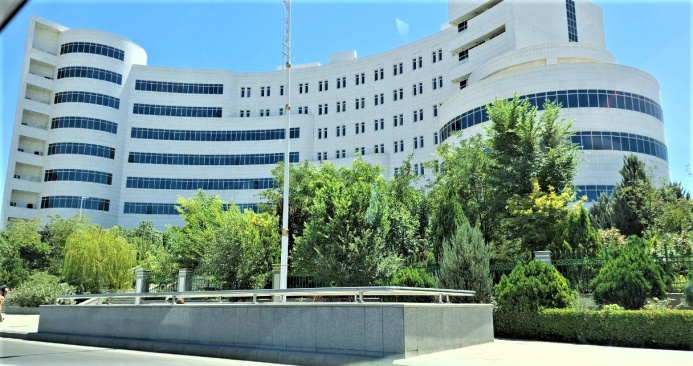Rare (orphan) diseases are illnesses that in 80% of cases have a genetic origin and occur with a frequency of 1 case per 10,000 people. They affect not only individual patients but also entire families, impacting generations. Moreover, 65% of these diseases lead to severe forms of disability — a reality that any parent might face. However, it is important to remember: even if a rare disease is incurable, help is always possible.
Protecting the health of the younger generation is a priority of the state’s healthcare policy. As part of the implementation of the State Program Saglyk and the national strategy Healthy Mother – Healthy Child – Healthy Future for 2021–2025, Turkmenistan pays great attention to the early diagnosis and treatment of hereditary diseases.
Under the patronage of the Ministry of Health and Medical Industry of Turkmenistan, over the past two years, the Scientific and Clinical Center for the Protection of Maternal and Child Health has successfully implemented a joint project with the Swiss company F. Hoffmann-La Roche Ltd. to diagnose and provide innovative therapy for two life-threatening genetic diseases: spinal muscular atrophy and hemophilia A.
Since most genetic diseases remain lifelong diagnoses, therapy aims not only to extend life expectancy but also to significantly improve its quality.
Spinal muscular atrophy (SMA) is a rare genetic disease that affects motor neurons, leading to progressive muscle weakness, complete immobility, and failure of vital organs. Patients’ intelligence and sensory perception remain intact, with IQ often above average, making early detection and timely intervention critical to improving prognosis and quality of life. For the first time in Turkmenistan, diagnosis and treatment for this disease have been successfully implemented.
The process of identifying, diagnosing, and treating patients takes place in three stages. In the first stage, primary healthcare physicians, upon detecting suspicious clinical signs, refer the patient to the Scientific and Clinical Center for the Protection of Maternal and Child Health, where examinations are conducted by specialists — a pediatric neurologist, hematologist, orthopedist, geneticist, and pediatrician. In the second stage, the Center’s laboratory conducts free molecular genetic DNA testing for SMA. In the third stage, patients with a confirmed diagnosis are able to begin treatment with the drug EVRYSDI, which significantly improves motor function.
The drug is supplied as a powder for preparing an oral solution. This is a convenient and effective form that can also be used at home. Parents are trained in the correct administration of the medication while in the hospital, after which they can continue to receive the drug uninterrupted in their local area.
The use of this medication in SMA patients has led to the recovery of previously lost abilities: increased range of motion, the ability to sit and move independently, and to perform self-care. Patients have experienced fewer acute respiratory infections and cases of pneumonia, and have spent less time in hospital beds. Early intervention and constant parental support have contributed to improving children’s quality of life, helping them realize their potential and adapt to living with the disease.
Hemophilia is another hereditary blood clotting disorder caused by a deficiency of factor VIII in hemophilia A. This disease has been known since ancient times. Modern medicine has come a long way — from complete helplessness in the face of the disease to the development of effective replacement therapy. Thanks to advances in genetics and molecular biology, hemophilia today can be reliably controlled with modern medications.
During the project’s implementation, patients with severe disease have been receiving the innovative drug GEMLIBRA, a monoclonal antibody that is significantly different from previous treatments. The drug is administered subcutaneously, which greatly simplifies the treatment process compared to the intravenous injections required for traditional replacement therapy. Many patients have achieved “zero” bleeding episodes. Reduced bleeding frequency and ease of administration allow patients to lead more active lives, reduce school absences, and minimize doctor visits. Children are returning to active lives, attending school, and participating in sports.
Innovative approaches to treating rare diseases in children in the country are already delivering tangible results. Thanks to government support, international cooperation, and the professionalism of medical specialists, many children with severe genetic diseases are gaining a chance for longer life, better health, and a brighter future.

